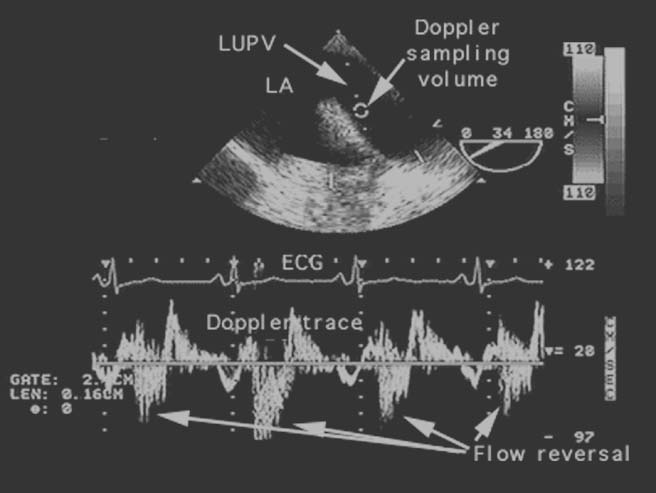 |
 |
Figure 33-15
Pulmonary vein flow reversal and severe mitral regurgitation.
Pulsed-wave Doppler measurement of blood flow velocities in the left upper pulmonary
vein (LUPV) is shown. At the top of the figure is a still-frame image of the two-dimensional
cross section used to position the Doppler sampling volume (the white
circle). On the bottom two thirds of the figure is the display of the
instantaneous blood flow velocities (vertical axis) versus time (horizontal axis)
occurring in the left upper pulmonary vein. The electrocardiogram is shown for timing
purposes, and the gray horizontal line running through
the Doppler tracing is the baseline (zero flow) for the flow velocities. Velocities
displayed above the baseline are positive and represent flow toward the transducer
(in this case, into the left atrium). Velocities displayed below the baseline are
negative and represent flow away from the transducer (in this case, into the left
upper pulmonary vein). This Doppler tracing documents systolic flow reversal (normally
it is positive, that is, toward the left atrium [LA] in systole) and confirms the
presence of severe mitral regurgitation. (From Cahalan MK: Intraoperative
Transesophageal Echocardiography. An Interactive Text and Atlas. New York, Churchill
Livingstone, 1997.)

 |
